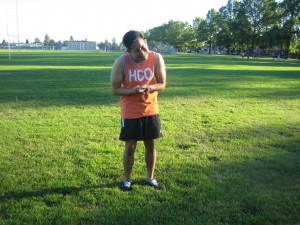The hand is a complex part of the human anatomy and it is composed of 27 bones including bones found in the wrist. A broken hand can be due to injuries at home or in the workplace. Broken bones on the hands can be caused by a direct blow such as fractures of the fingertips, broken knuckles and fractures of the thumb. There are 5 metacarpals that form the palm of the hand along with 14 phalanges which are small bones that form the thumb and the fingers. The thumb has 2 phalanges and the other four fingers are made of three phalanges each.
Causes of a broken hand
- Hand injuries can be caused by workplace injuries
- A trauma to the hand such as punching or striking injuries, falls, injuries due to sports and crush injuries.
Symptoms

- Bruising and swelling of the affected area
- Pain
- Having previous history of injuries
- Inability to grasp objects
- Misalignment of the finger and weakness
- Limited range of motion of the fingers
Treatment
- Control any bleeding that can be caused by the initial injury and apply direct pressure. Properly clean all wounds using alcohol or an antiseptic and cover it using a bandage or gauze.
- Apply an ice pack on the affected area. Wrap the ice using a clean cloth or towel or place in a plastic bag and place it on the injured area in order to help lessen the pain and swelling. Avoid placing ice directly on the skin.
- Remove any jewelry immediately after the injury. Take note that the hand can swell and there is difficulty removing the jewelry if the hand is already swollen.
- Immobilize the hand by using a splint or bandage which will depend on the nature and location of the fracture.
- If the affected hand is severely deformed, support the hand by placing it on a pillow and seek medical help immediately.
- Take the prescribed pain medications such as acetaminophen or ibuprofen in order to help lessen the pain and inflammation.
Tips
- The best way to prevent hand injuries while in the workplace is to be familiar with the safety rules and check for hand hazards.
- Avoid using the hands in wiping debris in machines. Utilize a brush that is designed for the purpose.
- Before starting work, check the equipment to ensure that it is in good condition.
- Before repairing or cleaning a machine, disconnect all electrical connections and follow safety procedures.
- Avoid wearing jewelries and wearing loose clothing when working near machinery.
- Wear protective equipment such as gloves, guards and forearm cuff and make sure the gloves worn fits properly.
- Wear safety equipment when playing sports in order to help prevent fractures. Wear hand and wrist guards when playing rollerblading, lacrosse and hockey.
- Maintain household safety measures especially with small children in order to help minimize injuries especially on the hands.
